10 Wildflowers That Grow In New Hampshire (Identification Guide with Pictures)
-
- Last updated:

New Hampshire is one state that’s very popular thanks to its stunning landscape. But the soaring mountains and rugged coastline are not the only natural features that have made it a haven for nature lovers. It’s also home to quite several wildflower species that are not so common anywhere else in the world.
Wildflowers are important to our ecosystems. They are the basic blocks in any critical food chain, meaning without them, the entire system would become unstable.
Below is a list of some of the most common wildflower varieties that keep the New Hampshire ecosystem in check.

The 10 Common Wildflower Species in New Hampshire
1. Whorled Wood Aster

| Scientific name: | Oclemena acuminata |
| Season: | Summer/Fall |
| Family: | Asteraceae |
| Flower Color: | White |
The Oclemena acuminata was previously known as Aster acuminatus. It’s very common in New England where it sometimes hybridizes with Oclemena nemoralis. Both species love growing in forests and belong to the same genus.
The Whorled Wood Aster blooms during summer, producing flowers that are white with yellow or pink disks at the center. Its leaves are coarse-toothed, and the reason why it’s sometimes referred to as the “Sharp-toothed Nodding Aster.” In case you haven’t heard, “aster” is a Latin word, meaning “star.”
This plant has a height of 30 to 36 inches and a stem that’s slightly zigzagged. It’s considered an important food source for some insects and birds.
2. Broadleaf Arrowhead
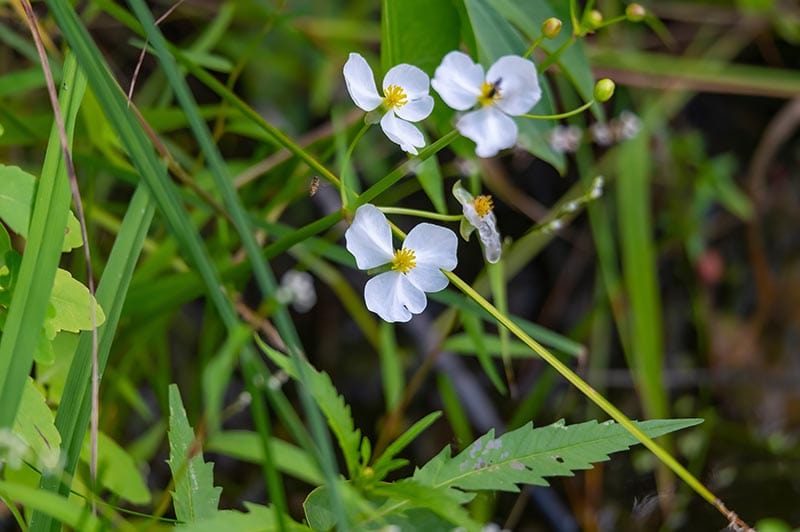
| Scientific name: | Sagittaria latifolia |
| Season: | Summer |
| Family: | Alismataceae |
| Flower Color: | White |
The Sagittaria latifolia is an emergent macrophyte—a plant species that prefer growing underwater but pierces the surface to access the oxygen in the air. As a collective, these types of plants are called emergent vegetation.
The Broadleaf Arrowhead doesn’t produce leaves that are similar in shape or size. Some are thin, while others are wedge-shaped. They are 0.5 to 0.75 inches wide, and 4 to 19.5 inches long.
In the Native American community, the Sagittaria latifolia is also called the wapato, Katniss, or duck potato. The “potato” must be in reference to the edible tube-like structures it produces to help it store some extra nutrients.
3. Green Adder’s-mouth Orchid
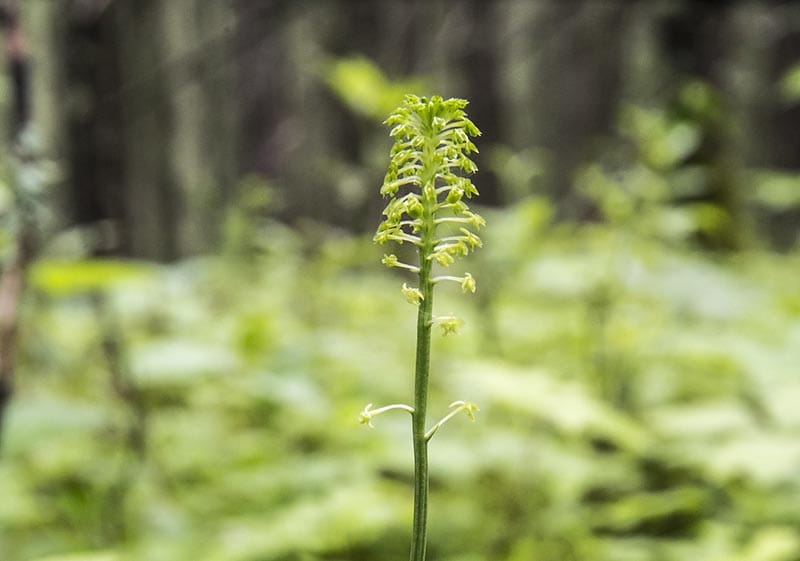
| Scientific name: | Malaxis unifolia |
| Season: | Spring/Summer |
| Family: | Orchidaceae |
| Flower Color: | Green |
The Malaxis unifolia has a plant height of 4 to 11 inches. Its leaf is about 1.5 inches wide, and 3 inches long. It normally produces only one leaf, but on rare occasions, you’ll find two. They usually take on an elliptical shape and have a pointed or blunt tip. The flower stalks are 0.4 inches long, slender, and sort of look twisted.
This species is perennial and mostly grows in coniferous bogs. The Green Adder’s-mouth orchid’s fruit is round, about 0.2 inches in diameter, and full of dust-like seeds.
4. Blue Toadflax
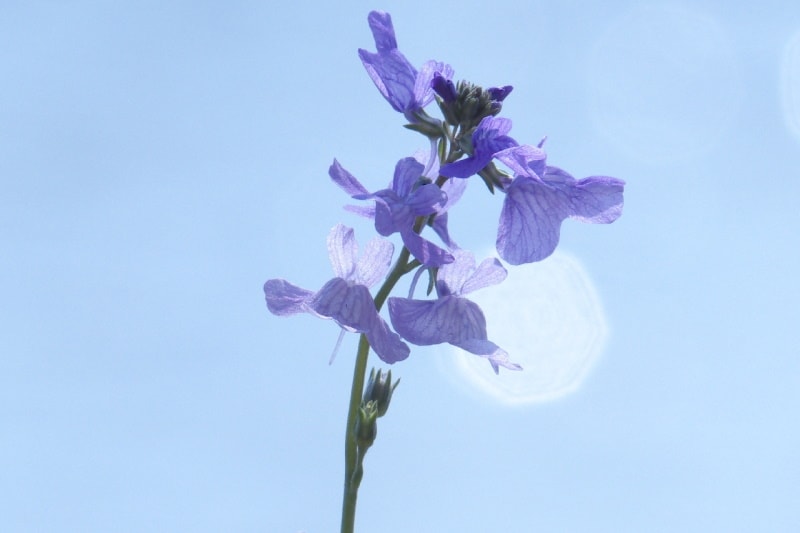
| Scientific name: | Nuttallanthus canadensis |
| Season: | Spring/Summer |
| Family: | Plantaginaceae |
| Flower Color: | Light purple |
The Nuttallanthus canadensis—also known as the Old-field Toadflax or Canada Toadflax—is normally classified as a biennial or winter annual species. Winter annuals are plants that germinate, mature, produce seeds, and then die within one season. Depending on the environmental conditions, this plant has a height range of 20 to 31 inches.
The Blue Toadflax’s flowers are purple and about 0.5 inches long. Its leaves are 0.5 to 1.2 inches long, slender, and smooth along the margins. The species is rich in nectar and that’s why butterflies and bees love spending time around it.
5. Wood Anemone

| Scientific name: | Anemonoides quinquefolia |
| Season: | Spring |
| Family: | Ranunculaceae |
| Flower Color: | White |
For the record, the Anemonoides quinquefolia is not the same species as the Anemonoides nemorosa. The latter is a European species, which also goes by the same common name, Windflower. “Quinquefolia” loosely translates to “five-leaved,” but that’s certainly a misnomer since the plant’s leaves only have three leaflets.
Unlike most wildflowers, the Wood Anemone produces one flower. It’s usually white in color, relatively small, and has no petals. This herbaceous species also comes with an underground rhizome that grows horizontally. If you’ve never seen it before, you’ll think it’s a different plant growing next to the Anemone.
6. Black Medick

| Scientific name: | Medicago lupulina |
| Season: | Spring/Summer |
| Family: | Fabaceae |
| Flower Color: | Yellow |
You can tell just by looking at the physical attributes of the Medicago lupulina that it belongs to the clover or legume family. According to botanists, species that belong to the Medicago genus (bur clovers) share a few genetic traits with the Melilotus (sweet clover) and Trifolium genera (true clovers).
In some communities, it’s called the Hop Clover or Nonesuch. This is a species that thrives in dry grasslands, producing leaves that are compound with oval leaflets. Its flowers are always yellow and have features that are very similar to those of the lesser trefoil.
7. Tall Hairy Agrimony
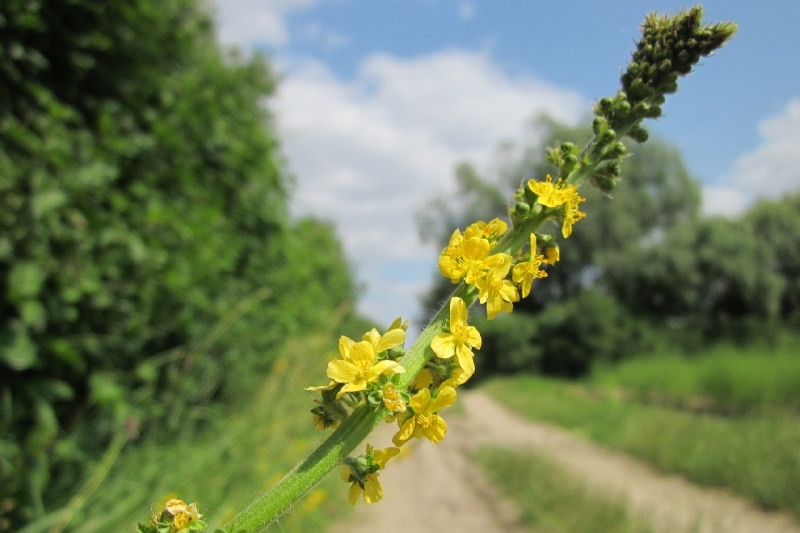
| Scientific name: | Agrimonia gryposepala |
| Season: | Summer/Fall |
| Family: | Rosaceae |
| Flower Color: | Yellow |
The Agrimonia gryposepala looks a lot like your typical rose for a reason—it belongs to the same Rosaceae family. This perennial flowering species has served the indigenous community for generations, as medicine that’s effective at quelling fever, nosebleeds, urinary problems, or diarrhea.
That’s a confirmation that the ethnobotanical applications of this wildflower are very similar to those of the Agrimony eupatoria. A species that also belongs in the same family and genus, but is native to Africa. Some scientists believe that they are the same plant, just different due to adaptive and divergent changes caused by environmental differences.
We’re talking about a species that’s 5 feet tall, and often releases a spicy scent when the stem gets crushed. As a wildflower, it thrives in forests and woodlands. Some people know it as the “Grooveburr ” species, seeing as it produces seed pods that are shaped like a groove.
8. Bearded Beggarticks

| Scientific name: | Bidens polylepis |
| Season: | Summer/Fall |
| Family: | Asteraceae |
| Flower Color: | Yellow |
The Bidens aristosa is mostly a summer wildflower. You’re most likely going to find it growing along in the abandoned fields or along the road. Some of its other common names are Yankee Lice, Long-bracted Beggarticks, Bur Marigold, Swamp Marigold, and Tickseed Sunflower. It’s native to North America, classified as an annual herb, and reaches 5 feet in height.
This wildflower is a staple in the bee community, as it produces lots of nectar. The flowers are yellow, and their heads feature both disc and ray florets. Its fruit is a dry achaenocarp, meaning it’s not only indehiscent but also monocarpellary.
9. Late Purple Aster
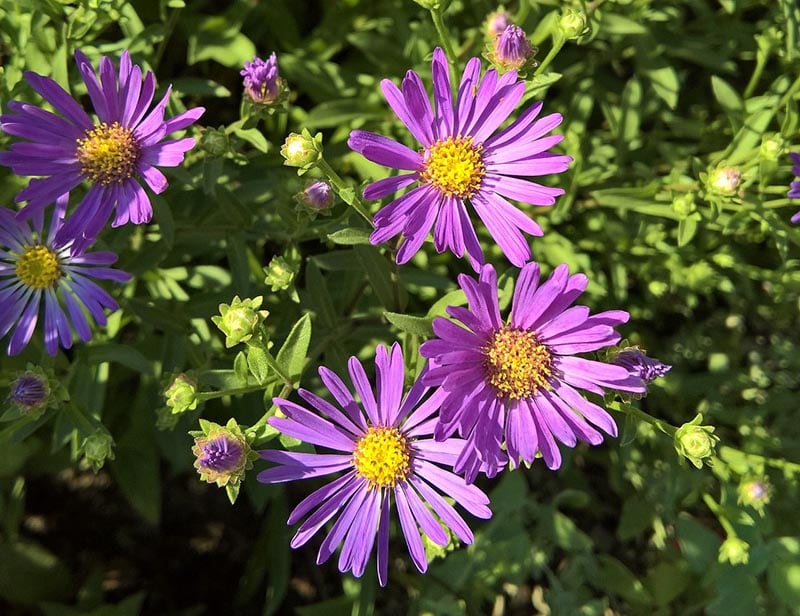
| Scientific name: | Symphyotrichum patens |
| Season: | Fall |
| Family: | Asteraceae |
| Flower Color: | Purple/Yellow |
Symphyptrichum patens is an herbaceous species with leaves that are oblong to ovate. It usually blooms in the period starting August through to October, producing tiny flowers that are either violet or bright blue. It likes growing in sunny regions, especially in areas that are defined as open woodlands.
The “Spreading Aster” is its other moniker. And it comes in three varieties—Var. patentissimum, Var. patens, and Var. gracile. We also feel obligated to let you know that this species is considered threatened in New Hampshire.
10. White Avens
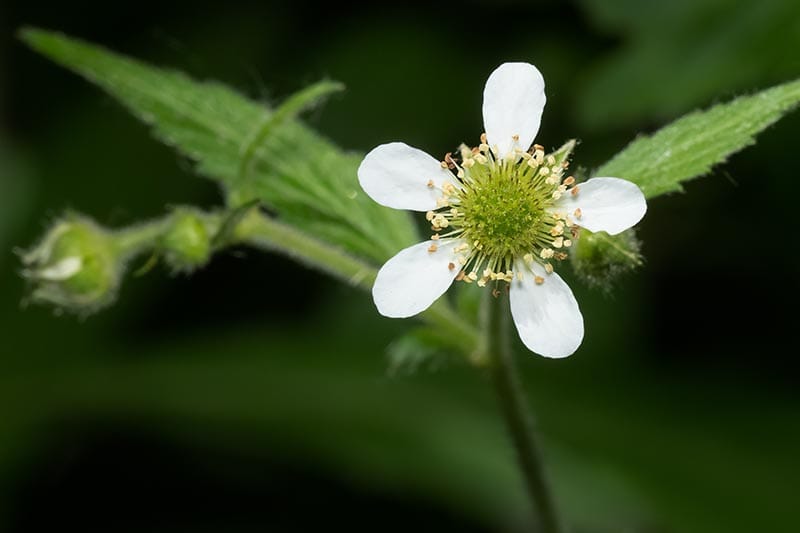
| Scientific name: | Geum canadense |
| Season: | Spring/Summer |
| Family: | Rosaceae |
| Flower Color: | Green |
Scientifically, the White Avens is called Geum canadense. It’s a member of the Rosaceae fraternity and common across the country. Canadians and Mexicans are also well-acquainted with the species, as it’s popular in those regions.
Avens is an herbaceous wildflower that blooms during summer. The flowers have green sepals, but white petals. To an extent, they resemble the flowers produced by the strawberry and blackberry species.
You’ll quickly note that the basal leaves are different from the upper ones, as they are darker in color and have coarse hairs. On top of that, they all have more than three leaflets.

Frequently Asked Questions (FAQs)
Do Wildflowers Grow Anywhere?
Wildflowers are not high-maintenance species. They can virtually grow anywhere as they are highly adaptable. That being said, if you’re looking to plant some, make sure you plant the seeds in an area that receives at least 6 hours of sunlight every day. They need light to make food, through a process known as photosynthesis. On top of that, the soil has to have good drainage and aeration.
Are Wildflowers Perennial or Annual?
Some species are perennial while others are annual. Perennials are different from annuals because they don’t just die off after one season. You’ll find them regrowing every spring, though they have a shorter blooming period. We also have biennial wildflowers, although they are very rare. Such plants have a 2-year life cycle, where they spend the first season establishing roots and foliage, and the second season blooming.

Conclusion
Wildflowers can be ornamental or functional plants. An ornamental species is the kind of plant that’s grown to serve an aesthetic purpose because its value is its attractive features. Functional wildflowers are the kind that are grown to provide food or medicine.
We felt the need to share this piece of information to remind you that all wildflower species are valuable to us in different ways.
Featured Image Credit: J K Laws, Shutterstock
Contents

